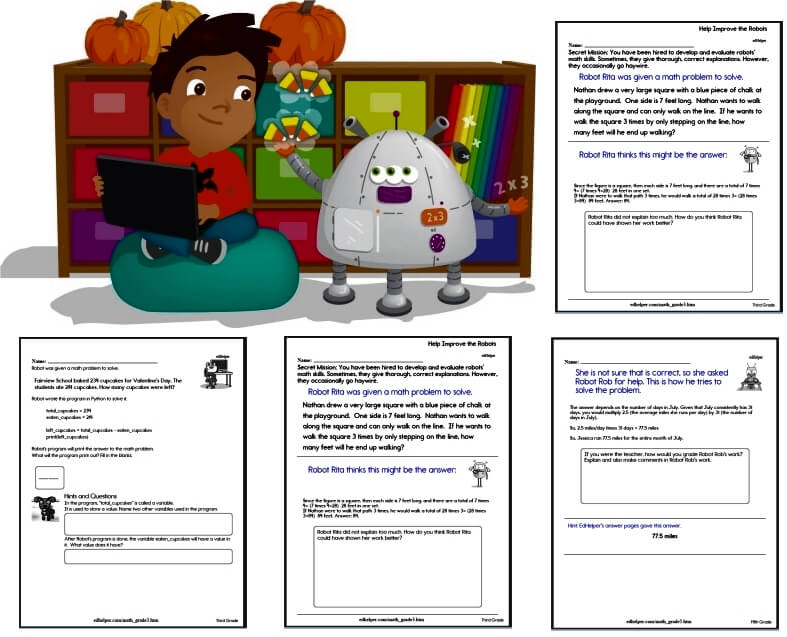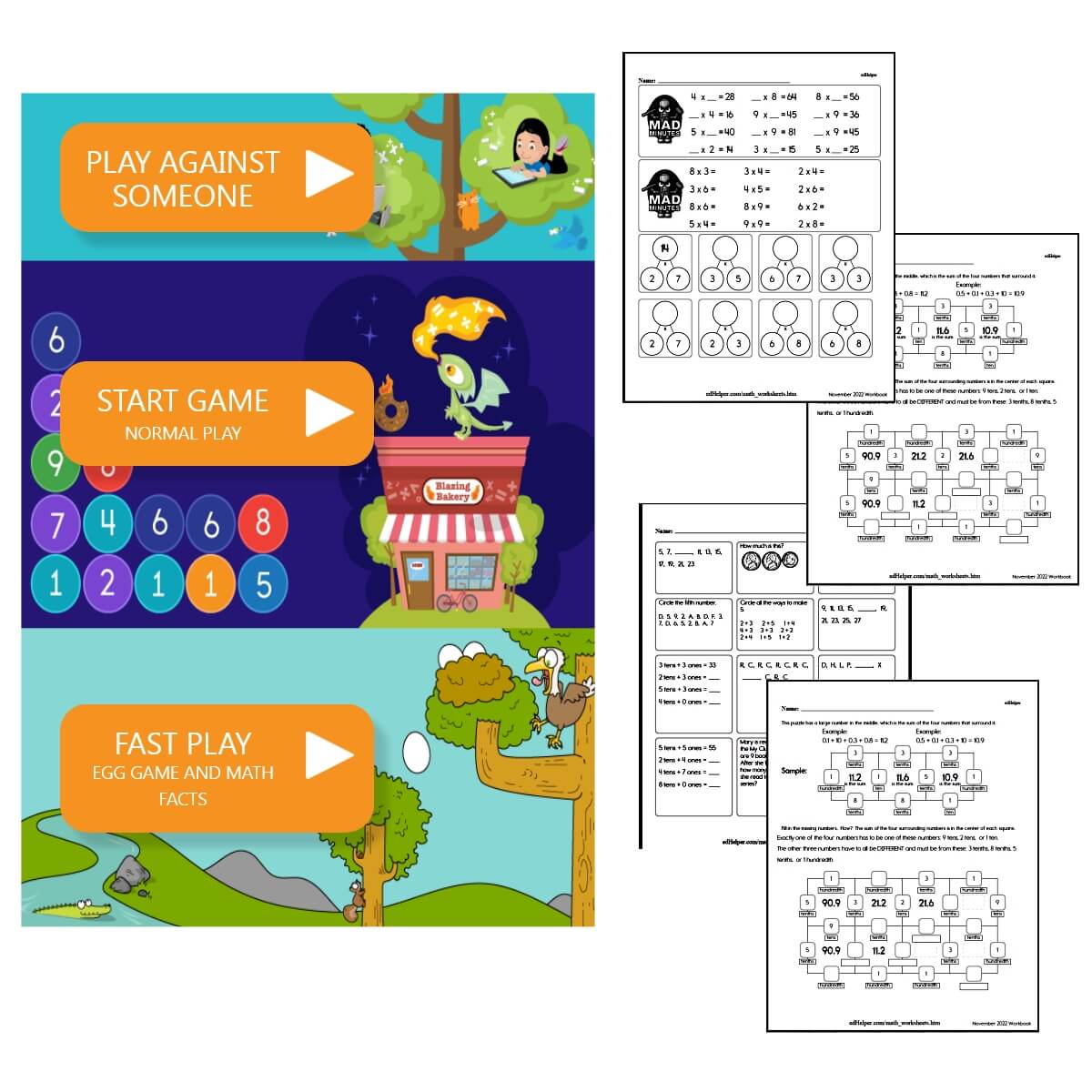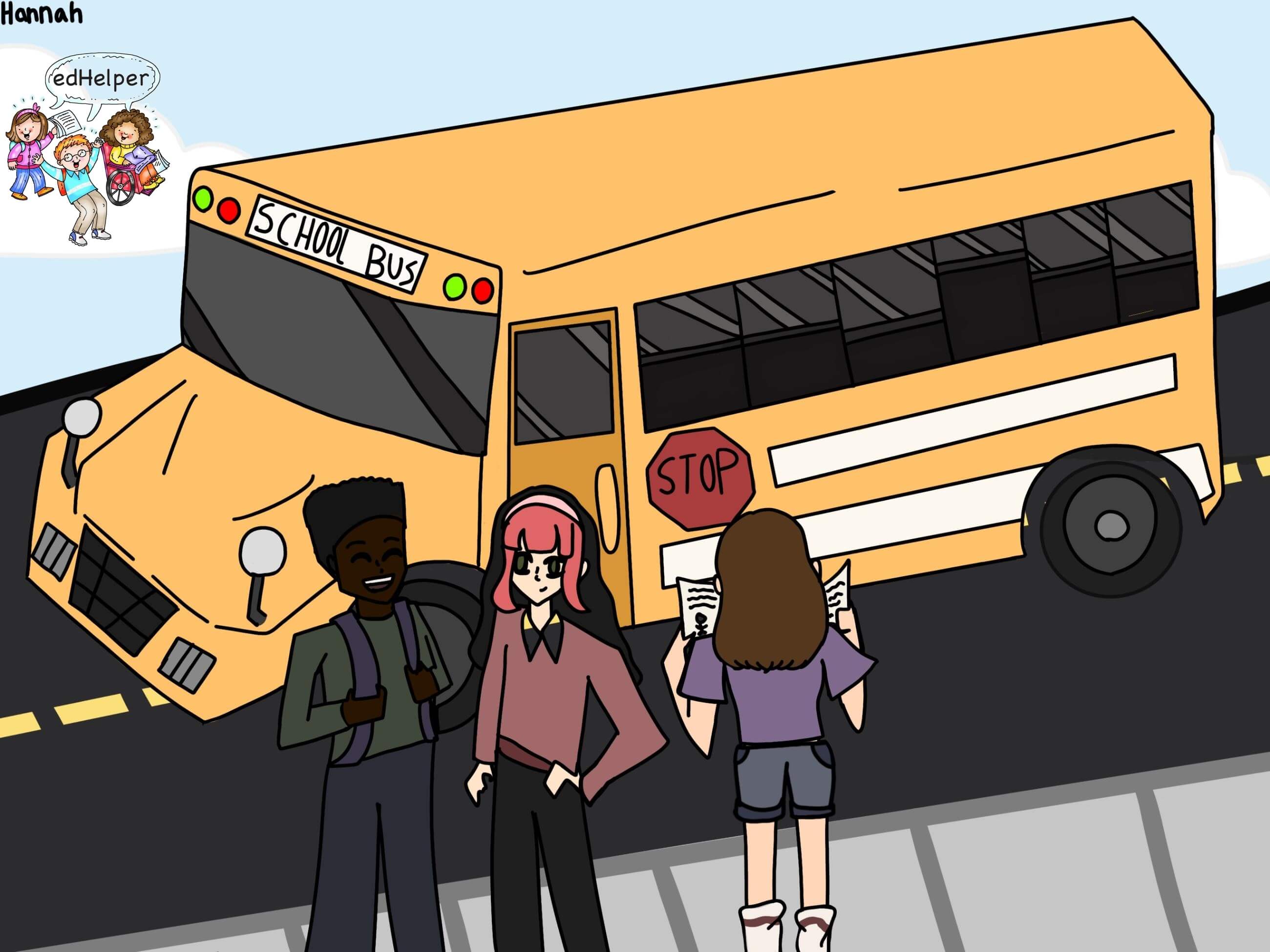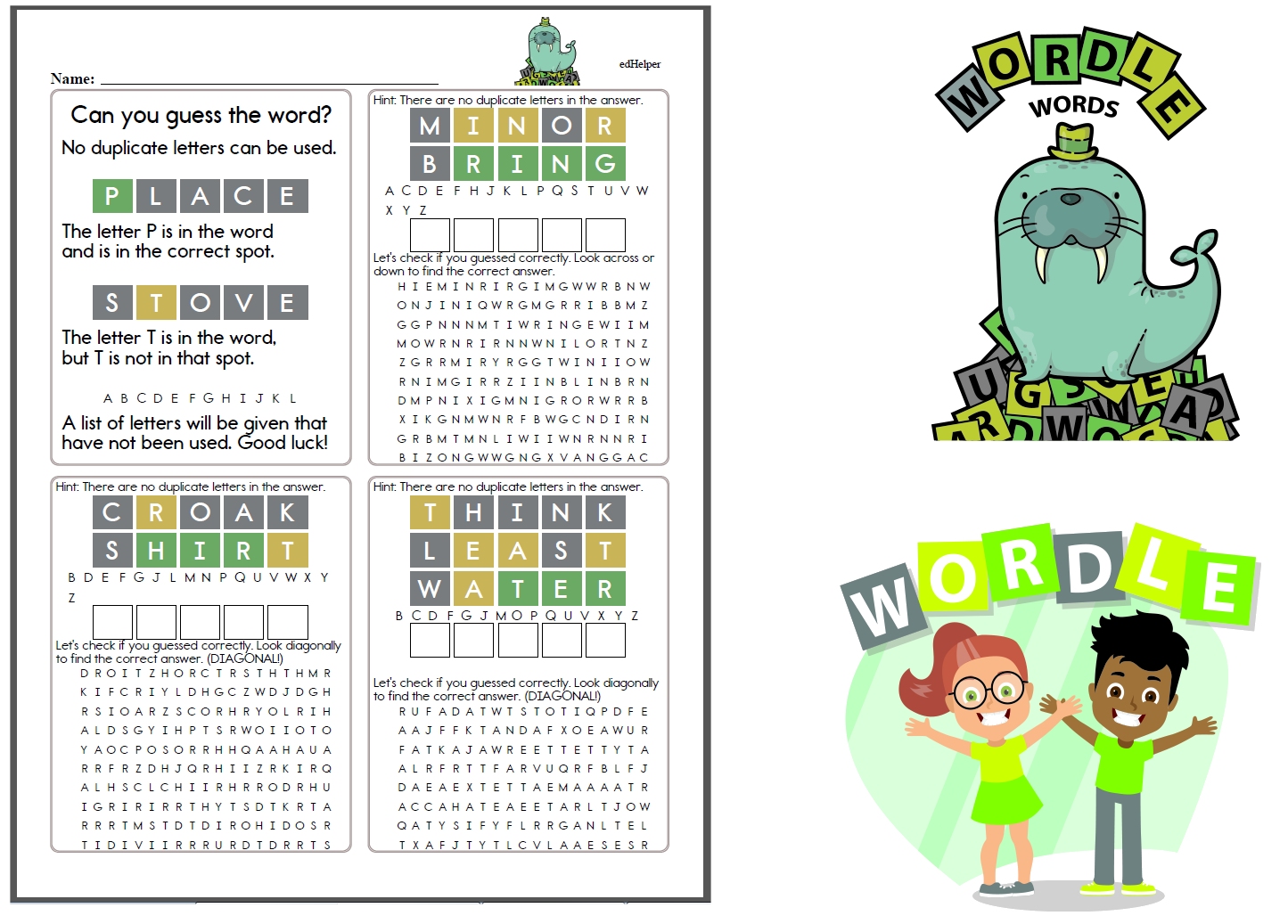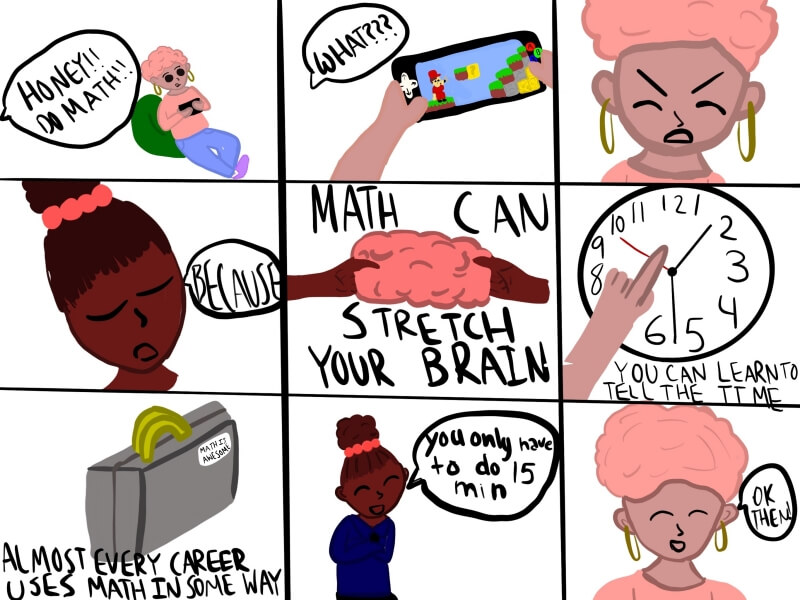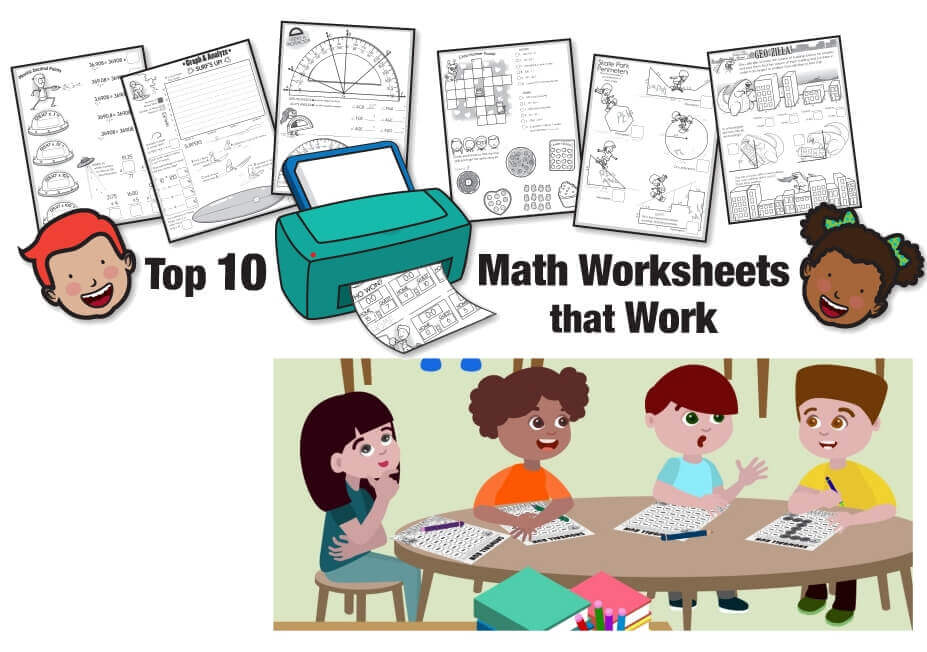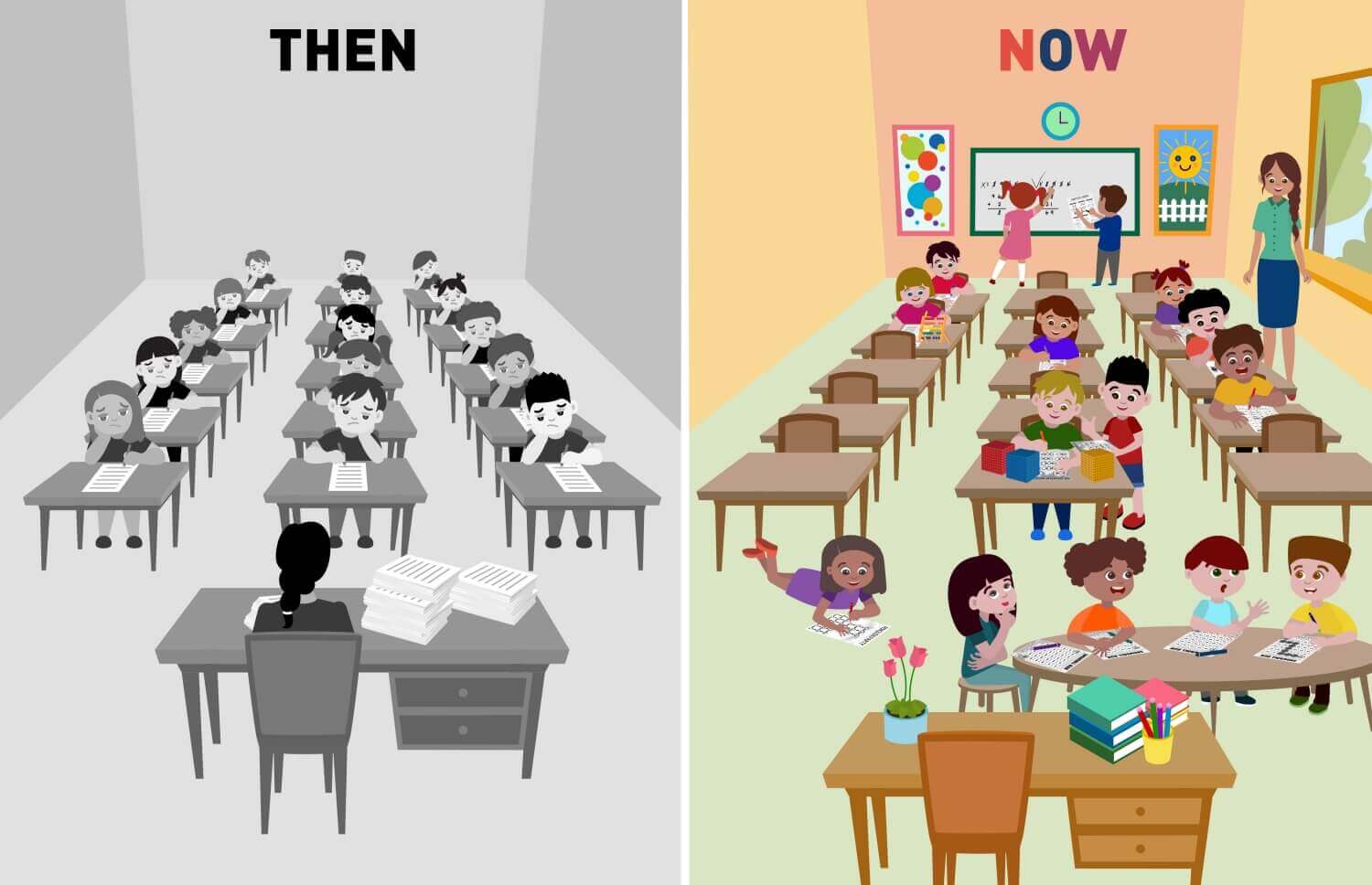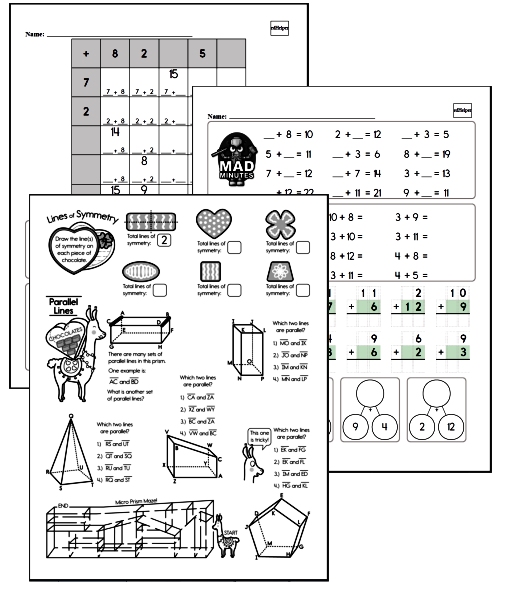Kids can play the math games at edhelper.com/math-games.htm.
Score Keeper Printable (1 page PDF for students)

Kids can play the math games at edhelper.com/math-games.htm.
Score Keeper Printable (1 page PDF for students)
Years ago, Mary Poppins taught us that with a snap of the fingers (and a spoonful of sugar), any job could be turned into a game. Now, decades later, business owners and educators are starting to see a similar principle in action with gamification. What exactly is gamification? Can it work in your classroom and with your curriculum?
Gamification of learning is an educational approach aiming to increase motivation in students. The idea is to incorporate game design elements, like points, badges, stickers, and leaderboards to maximize enjoyment and engagement. Gamification has the potential to increase motivation, and with student motivation being an important predictor of academic achievement, increasing motivation is crucial. Approximately 1.2 million students fail to graduate high school each year. Why? Many of them aren't motivated to pursue academic goals. A motivated student is more likely to give more effort and spend more time engaged in learning. Since most students can be driven by a little competition, whether that's wanting to make it to the next level before recess or hoping to earn more points than their partner, gamification has the potential to drive them towards success. It can also help solve many of the daily issues teachers struggle with, like student participation, time on task, data tracking, differentiation, and overall student achievement.
Gamification isn't, however, just about student motivation and competition. Many of the games and game systems promote communication and cooperation. They inspire imagination, creativity, and problem-solving. They also provide a reward system, which, if we're honest, inspires us all to keep going. Are you pushed to take a few more steps in order to feel the reward of closing your circles and receiving a ring of fireworks on your smartwatch? Do you push to finish one more level of your word game because you want to see your avatar on the virtual podium holding a trophy? Do you tirelessly enter all your spending on a budgeting app because balancing your income and spending will earn you a new badge? If gamification works for us as adults, even if we didn't realize that "it" had a name, imagine how well it could work for students. So, where do you start?
In order for gamification to be successful, you need to identify what is and is not working in your classroom. Where are the disconnect points in your lessons? Are your students struggling with motivation, or are you struggling with classroom management? Once you've identified the struggles, you can determine a good starting point for gamification. Next, survey your students' interests. If most of your students are into sports, you may want to create a point system in which it is possible to score a goal, make a basket, or hit a home run. If more students prefer role-play and imagination games, you may want to create magic maps to navigate, treasure hunts to explore, and quests to complete. The more you can tailor gaming to your students, the more interested they will be. The more interested they are, the more motivation they may find!
When first attempting to gamify your classroom, little changes can go a long way. Simply changing your word choices around assignments, assessments, and behavior expectations can help. Rather than have students work towards completing a series of workbook pages, have them strive to complete a "Quest." That Quest could relate to a well-designed challenge book from which students would pick and choose the pages they wanted to complete. Instead of trying to earn points for a grade, try earning points to pass one level and move on to the next (points can, of course, be converted to traditional grades later for reporting purposes, but for day-to-day purposes, keep it fun!) You may want to create teams for behavior goals and allow the collaboration and healthy competition to spur your students towards success. There are also several apps for gamification that will allow you to use technology as you set up your structure.
Once you've surveyed your students and set up some type of structure, you're ready to begin. While there are as many gamification implementation options, just as there are video games to download in the app store, here are a few that may be an easy place to start.
Create a teacher vs. student point system. When students complete a certain task or follow certain rules, the student team earns points. Points could be earned, for example, when the class receives a positive behavior report from the PE teacher or when another teacher compliments their behavior in the cafeteria. Student teams could also earn points if a set percentage of students complete and submit assignments on time or score above a certain breakpoint on a test. This fosters collaboration and support because students will work together to help those who are struggling in the hopes that shared success will result in points earned. In contrast, if these things don't happen, the teacher receives the points. Set a goal and a reward for the team to reach the top first!
Use individual point systems for individual students. Based on your structure, students may be able to earn points for a variety of things. Provide a reward for each level achieved. This could be as simple as being allowed to wear a hat inside the classroom when achieving one level, getting to wear sunglasses when reaching the next, getting to lie on the floor when working rather than sitting at a desk for level three, and so on. Don't feel like you need to purchase prizes to gamify your instruction. Instead, think of things that would make your students smile and want to push to reach that next level. Start there!
Rather than a traditional seating chart, why not create a board game, video game, or athletic field? Allow students to move seats, just as they would progress down the field or to different places in the game based on performance. Who can pass go and collect $200 first?
Students may better relate to the idea of earning badges and collecting tokens rather than earning grades or points for an assignment. Try handing out badges or tokens they can collect based on the work they complete. You may want to offer them the option of trading tokens in for rewards (tangible or intangible) at a class store or creating a scorecard where they attempt to get one color badge for each subject area each week. These types of friendly individual competitions help to push students to give their best effort.
Allow students to set their own learning goals and determine an appropriate reward once they meet them. Students can design a scorecard to track their progress with different levels and checkpoints along the way. This can be as simple as a coloring chart, where each square represents the accomplishment of another task, or can be very complex. The idea is to give your students ownership over their goals, plans, and progress.
Did you know that you can turn traditional technology into a game? If you're already used to using Google Forms or Google Docs, you can easily gamify those (and so many other!) online resources. There's no need to learn a new platform; simply modify the way you currently use it.
While your students are busy playing "games," you are able to take their earned badges and level passes and translate that into powerful data. While your students are busy playing "games," you're really helping them see that school and education are a game worth playing! As educators, our goal isn't just to help our students to succeed at school; it's to help them win in the game of life! Gamification has the potential to encourage our students to pursue greatness-whether they are hoping to pass the next level or win the class competition. Students who are eager to try become students who are eager to learn, and that is a win-win for teachers and students.
Formative assessment is still critical during distance learning. Use these quick tips to modify your favorite strategies for virtual instruction or try some brand new digital-only options to help engage and support your students' varied needs.
If the 2020-2021 school year had a theme word, it would probably be "pivot." This was also the theme of an iconic Friends episode nearly a decade ago. Ross, desperate to get his brand-new couch up the stairs and around a tight landing, sketched out a plan and brought his best friends over to help move it. Unfortunately, it was much more difficult than anticipated. A frustrated Ross was left yelling "pivot" over and over again! As far as he was concerned, all his friends needed to do was pivot, and the couch should have moved. But it couldn't, and it didn't.
By this point in the school year, you may feel like the local government, federal government, and even district admin continue to yell "pivot" with each new case spike, shelter in place order, and distance learning vs. hybrid vs. in-person instruction plan. Thankfully, educators are less like Ross and Rachel and more like another iconic character: Gumby. Known for bending, shifting, and stretching, educators use their passion, heart, and commitment to student success to take on the challenges that each year brings.
This pivot to distance learning meant putting many tried-and-true classroom strategies on hold for a bit. Gone are the days of walking around your classroom and peering over a student's shoulder to quickly assess their understanding of the content. Overhearing casual conversations between students to determine the review that needs to take place is not as simple as it once was. Formative assessment is still crucial. Teachers need to be able to monitor and support their students' efforts. They need to be able to adjust strategies and pivot their instruction.
The four attributes of formative assessment may look a bit different during distance learning but can still be done with a few small shifts.
In order to assess students, it's important to first clarify what they will learn and identify tangible ways to tell if they learned it. During synchronous instruction, teachers can clarify by having students restate the day's learning goals. This can happen verbally, using the chat box, or in small group discussions using a breakout room. Asynchronously, students can record the learning goals using a discussion board or in a journal (either online or offline).
Teachers need to ask questions and collect evidence of student learning. There are several quick and easy-to-implement strategies to elicit evidence of student learning during synchronous instruction. Students can respond by answering polls, verbally responding to questions, and using hand signals such as a thumbs up or thumbs down. When students are working on their own, online quizzes or learning tasks that can all be submitted and reviewed electronically by the teacher can be used as well.
Once the evidence has been gathered, teachers need to review and interpret it in order to see students' progress toward the learning goal. When teachers are working with their students online, they can immediately interpret student work. They can also interpret students' understanding based on questions asked and answered in real time. When students are offline, teachers can evaluate and score student assignments.
Finally, teachers make next-step decisions to move students closer to proficiency or mastery. This often requires reteaching and a different delivery method than originally used. As teachers seek to move students toward the achievement of learning goals, they can act by offering feedback that can help solidify students' understanding. This can include reteaching or modeling. It may involve peer feedback as well. Teachers can offer this specific feedback even when not in the classroom with their students. They can offer online comments on documents, give video feedback, or email their suggestions. Comments can include tools for review. Teachers may also offer additional assignments that can address the same objectives or content and support students as they progress.
Engaging students in formative assessment has another benefit beyond helping teachers guide instruction: Using various assessment strategies increases student engagement. During distance learning, there are limitless opportunities. Here are educators' five top suggestions that can easily be adapted for online learning:
When teaching in person, this is a great way to have students brainstorm ideas and collaborate with peers. Armed with different colored markers, students work in small groups and rotate from poster to poster, answering questions and responding to prompts. The same idea can work online using Google Docs. First, group your students in teams of 4 or 5. Create one Google Docs document per group. Share one doc with each team. Have the students open the doc and begin responding to the questions. After a set amount of time, share the docs again, but with new teams. This will allow the students to see their classmates' previous answers and thoughts and respond accordingly.
When you're ready for school to feel a bit like a game show, the ABCD student-response formative-assessment option can be a great fit! Students respond to questions by holding up an A, B, C, or D notecard that corresponds to their answer choice. This can easily be duplicated during distance learning by having students make their own set of answer cards and asking them to hold up their answers on camera.
Teachers use this strategy by first asking one student a question. Next, they ask a different student if student number one's answer was reasonable. Finally, a third student is asked to provide evidence or support either/both of the responses. During distance learning, consider having all students play the role of student number three. After asking the first two students to respond verbally, have the rest of the class chat about their opinion. This will not only help with student engagement but also accountability as each student is expected to listen and respond to each item.
Much like an exit ticket at the end of a lesson or the end of the day, this strategy asks students to list three things they didn't know before, two things that surprised them, and one action step they will take with the information they just learned. During virtual learning, consider making this a discussion prompt where students can see and respond to each other's posts or ask students to privately submit their response to you in a message, email, or document.
Students often ask questions that, while not necessarily tied to the exact aspect of the lesson, spark an idea of something that needs to be covered later or reviewed. Rather than get off task, teachers can have students record those ideas in a "parking lot" to be addressed later. Normally, this would happen on the whiteboard or a bulletin board. Online, consider using a Google Doc that can be edited and viewed by the entire class in real-time. This provides students a place to record their wonderings, is a quick gauge of content that may be confusing and allows the teacher to continue the lesson without missing a beat.
Additionally, there are limitless digital-only tools that can be used for formative assessment. When teaching in person, bringing in a new digital assessment tool may feel like a novelty. However, if all of your instruction is taking place online, it may feel a bit overwhelming to explore too many additional digital resources. Try introducing one new tool at a time over a few weeks. This will give you and your students a chance to pivot together.
Perfect for math review and tracking content mastery, this free math app allows teachers to set up their classes and track student practice time. Designed for just five minutes of use at a time online or using a downloaded app, this is the perfect option for in-class or at-home formative assessment using purposeful technology.
Students can create quick videos (from 15 seconds up to 5 minutes) and respond to prompts or questions. Teachers and peers can review the videos and offer feedback.
Use this site to create quick polls and have students respond using tablets or devices. This real-time feedback is great for formative assessment and student engagement.
A quick option for creating assignments and assessments. Quizalize lets teachers create and assign quizzes, analyze results, and assign follow-up activities based on needs and learning gaps.
If you are looking to build presentations with built-in formative assessment opportunities, Pearkdeck is a great choice. With varied question formats and response opportunities, students will enjoy the opportunity to engage in your presentation and the pauses presented for responses and interaction.
The pivot to online learning, hybrid classrooms, and ever-changing policies has certainly made 2020-2021 a school year to remember. Don't feel like you need to completely reinvent the wheel when it comes to formative assessment. A few small shifts will allow you to use familiar versions of your favorite activities while perhaps incorporating some new strategies as well. The ultimate goal of formative assessment is to help our students thrive. Thankfully, that's what you as a teacher do best!
